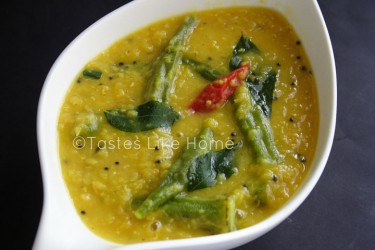Hi Everyone, One of the things about communicating is knowing when to say what, to whom, and how to say it. We make this determination not because we can’t express ourselves at any other time, but rather, because the climate is conducive and the potential recipients are in a receptive state of mind. What I am about to tell you is nothing new or revolutionary. It is just that given the current state of economies across the world, and that we are only 4 days into a New Year, it seems appropriate to appeal for the return to a lifestyle of cooking and eating that serves us well. I am referring to getting back to basics by eating weekday food during the week and weekend food at the weekend.
By weekday food I mean the simple kind of meals that tend to have a lower calorie content but are packed with nutrients. Food that we are fed that would be in keeping with our growth and work/study lifestyle. Weekend food would be the types of dishes that we can spend more time preparing, 
For those of you who never gave up this style of cooking and eating. I salute you. For the rest of us, it’s a reality check if we hope to have any degree of longevity or to being healthy.
When I was growing up, in our home weekday food meant lots of vegetables and seafood with rice or ground provisions, roti, occasionally. My mother seemed to place more emphasis on ensuring that we ate the types of food needed for our varying developmental stages as growing children. Even as adults she strove to cook the kind of foods that she felt we needed as working people. I’ve always thought of weekday food as nutrition to fuel the body for the long hard days and nights of work and study. To round out the weekday food fuel there were porridges, soups and lots of fruit.
I consider weekend food to be food of comfort. It is food to slow you down, literally and figuratively. It is food to linger over, food with which to connect and bond. It is food that feeds not just the body but the heart and soul.
When I first moved to Barbados a little over 15 years ago, I initially immersed myself in the eating style here which tended to emphasize heavy meals throughout the week. Things that, at home, we had eaten maybe on a Sunday – things such as baked chicken and macaroni pie, might be eaten any day of the week in Barbados. However, I quickly changed back to the style of eating I knew because the heavy eating all week wasn’t working for me. Don’t get me wrong, I’m not saying that the Barbadian lifestyle of eating is bad, what I am saying is that all of it did not suit my health on a daily basis. I took from the cuisine the things that worked for me and incorporated them into what I was accustomed to, having grown up in Guyana.

However, what I learnt in conducting research for this column was that the weekday/weekend style of eating was not restricted to Guyana. Here in Barbados there used to be a style of weekday/weekend food too. Weekday food consisted of ground provisions cooked with some type of fish stew (salt fish and fresh fish), soups and Cou-cou. The weekday meals would be served with vegetables such carrots, okra, lettuce, cucumbers and a variety of fresh green peas and beans. Weekend food was rice and peas, baked meats, garden salad and then later, macaroni pie was added to the menu.
These days, in addition to maintaining a weekday/weekend style of eating, I have also adopted a semi weekday vegetarian diet leaving the weekends for meats. In other words I eat vegetarian food 3 out of a 5-day workweek.
A weekday-weekend style of eating immediately offers for us 3 benefits:
● More healthy eating
● Support of local goods/produce
● Reduction of food import bill
These benefits are far reaching. The scope of this column does not allow me to go into such lengthy details, but at a glance here are some of them:
More healthy eating means we are less likely to fall victim to chronic non-communicable diseases such as hypertension, diabetes and cardiovascular diseases. Think of the money that can be saved on a personal and national level when it comes to health care.
Support of local goods/produce means that we would be consuming foods produced locally and eating seasonally. The quality of the food would be superior and the cost of eating seasonally significantly reduces individual household food budgets. Think of the ways in which we can channel that saved money to benefit our families.
Reduction of food import bill – buying and eating local means that you are contributing to the maintenance and creation of jobs. Unemployment is reduced and the funds saved can be redirected to boosting local production and manufacturing, creating even more jobs, and potentially, external markets.
My back to basics approach is not about an outright turning back of the hands of time, rather it is about taking the best of what our varied cuisine has to offer and merging with the old. Yes, I said old because that is what many would think – that the way we used to eat was so old (fashioned). It is so old fashioned that is why scientists over the years have been coming to places like Barbados to study why there are so many centenarians here. As the quest continues to look younger and live longer, scientists are investigating the general lifestyles of centenarians, they want to know what the “secret” is to their long life, many of whom have few health problems and their wits intact. The number one question always centres around food and diet.
Here’s an example of taking something basic from the Chinese influence on our food. Cooking techniques such as stir-frying and steaming are regularly used to create sumptuous dishes. Stir-frying uses very high heat with very little oil, it is fast, quick and maintains a high percentage of the nutrient content especially for vegetables cooked this way. When meats and vegetables are combined as a stir-fry, there is just enough protein (meat) added without the overload that can lead to things such as heart disease. When large roasts are cooked, they are highly flavoured and when served, they are sliced thinly. As a result, our taste buds quickly become satisfied and we are satiated. It’s the type of cooking that can serve us well as part of our food intake. And that’s only one small part of a mammoth cuisine.
In Guyana our multicultural cuisine offers us such tasty variety for this back to basics approach I am suggesting. If we look to our African and Indigenous roots, we will find the prolific use of ground provisions and its many by-products. Cauldrons of hearty soups with grains, meaty stews with peas and beans round out the many offerings we can indulge in for weekday food and weekend food.
The Indian dhal we make which can be made with more than just plain old split peas is a good source of dietary fibre, protein and complex carbohydrates. The style of cooking vegetables and the many ways to flavour the vegetables provide many possibilities to eating well.
We have a tradition of tea and how fortunate that we can learn something and benefit from the tea drinking practices of many among us. We have our own blend of herbal and bush teas, as well as the black teas of India and the green teas of China. You see? We have something from each influence of our cuisine that lends itself naturally to us eating and drinking well.
The abundance of seafood, especially fish is staggering. You can eat a different fish each day of the week for 2 straight weeks and you still won’t have eaten the variety available. And the fruits, you name it and it seems to be there. I never truly appreciated variety in bananas until I found myself only having access to one type.
Let’s work at getting back to eating our own food and in a manner that benefits us.
Happy New Year!
Cynthia





